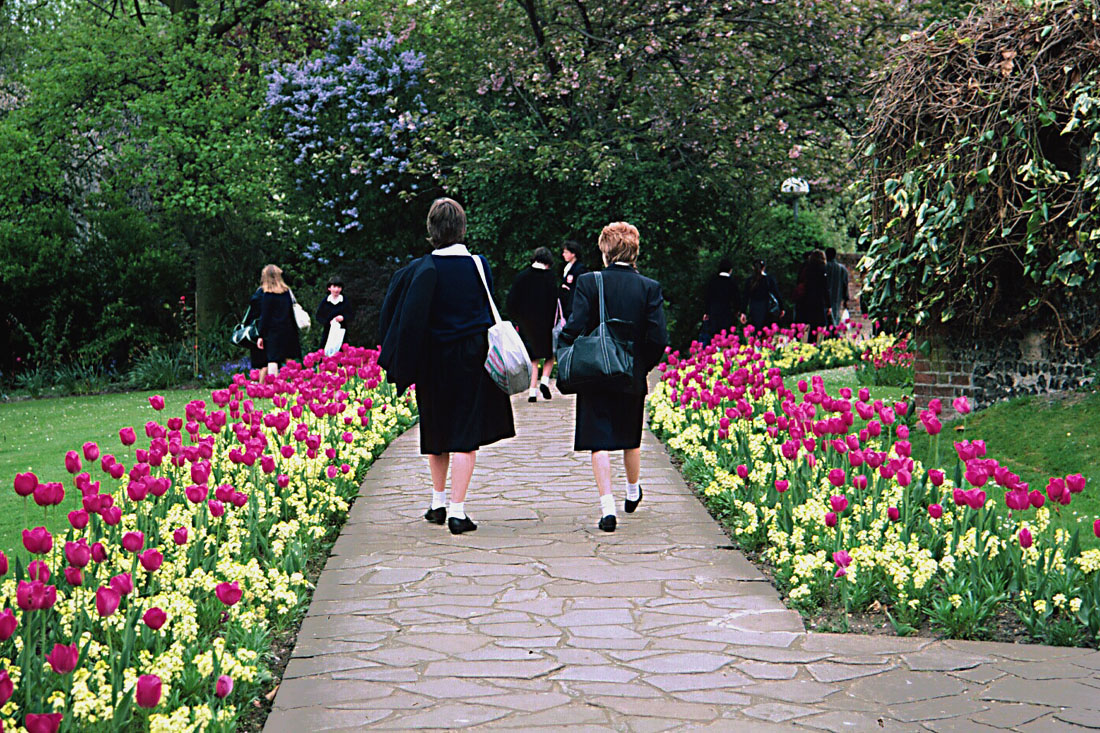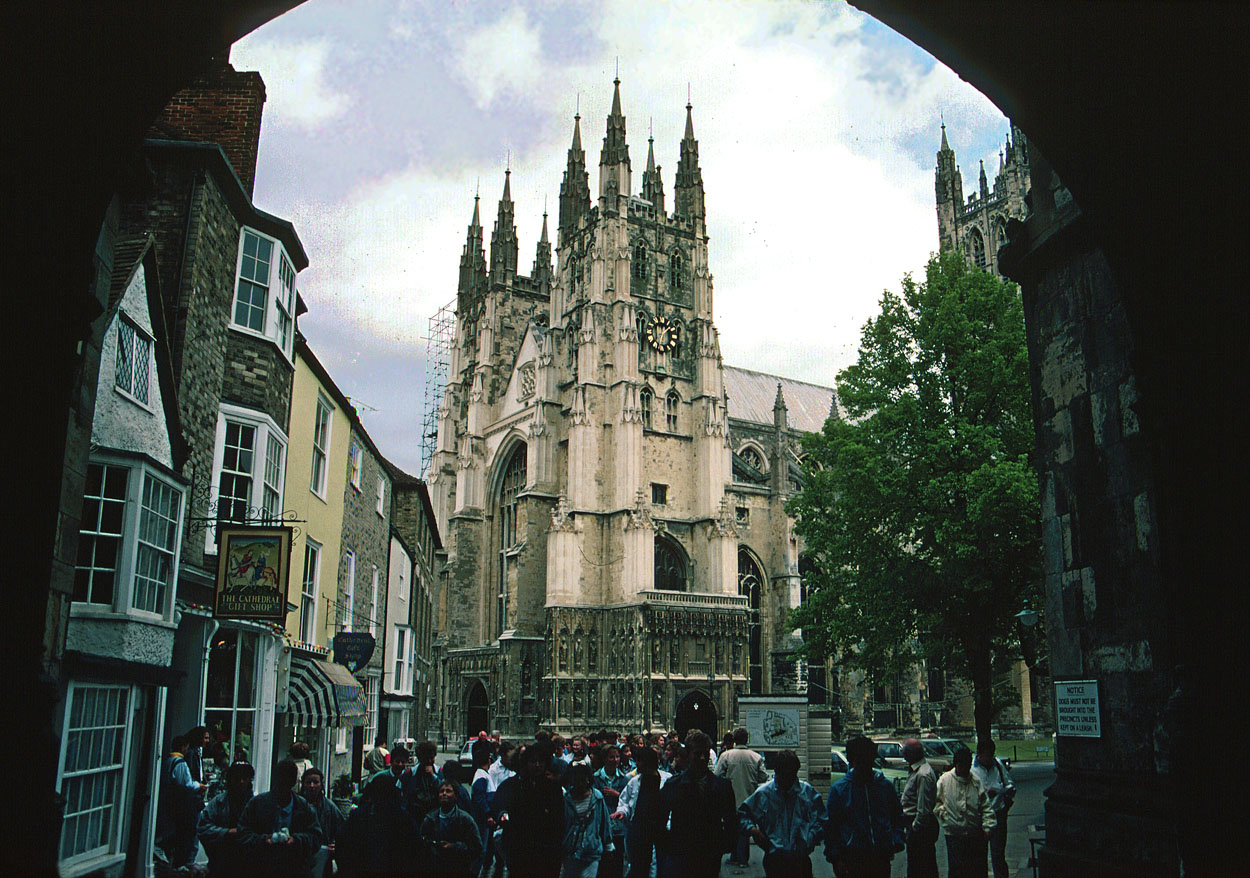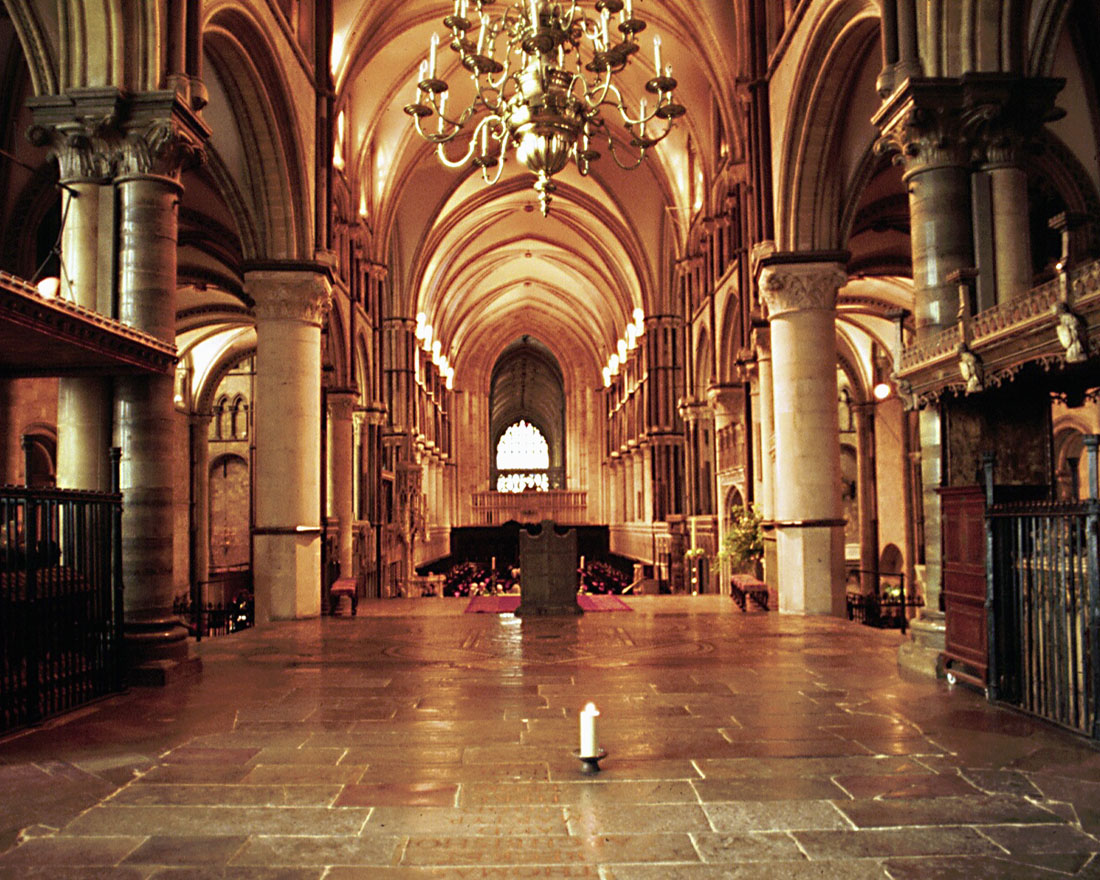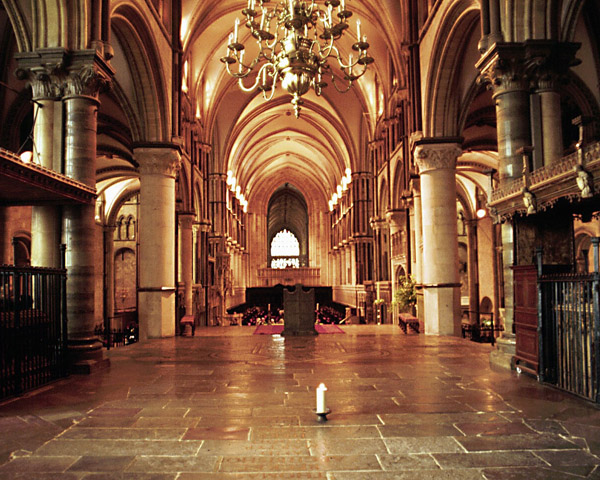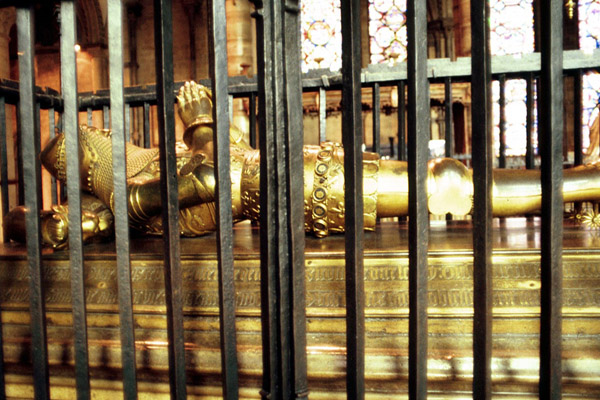|
x
Canterbury Town
Canterbury, England (ancient Durovernum)
on the Stour River in Kent (southeastern England) is the ecclesiastical
center of England. Trade in grain and hops, the chief crops of the region,
is conducted here. Among the industrial establishments are textile mills,
brickworks, and breweries. The town of Canterbury is dominated by its huge
cathedral, seat of the Primate of the Church of England since the late 6th
century. The present cathedral was constructed between 1070 and 1180, with
important additions dating from the 15th and 19th centuries. Trinity
Chapel, to the rear of the altar, contains the site of the shrine of Saint
Thomas à Becket, who was murdered here in 1170. At the eastern terminus of
the cathedral is the circular tower known as Corona Chapel or Becket's
Crown. On the northern side of the cathedral are the cloisters, chapter
house, baptistery, deanery, library, and the King's School (a grammar
school). Among the Roman relics in Canterbury are the remains of the town
walls and the mosaic floors of a villa. Canterbury is the seat of Saint
Augustine's College (1848), the University of Kent at Canterbury (1965)
and the City of Canterbury College of Art (1874). Canterbury is a town of
ancient British origins. It was occupied by the Romans in the 1st century
AD. In the late 6th century it became the capital of Ethelbert, king of
Kent. The first Christian missionary to England, Saint Augustine, arrived
here from Rome in 597, founded the abbey, and converted Ethelbert to
Christianity. The town subsequently became a Saxon religious and cultural
center. From the 8th to the 11th century it was raided periodically by the
Danes, who burned the cathedral in 1011. The cathedral's shrine to the
martyr Saint Thomas à Becket was the object of pilgrimage from the 12th to
16th centuries that were immortalised by Geoffrey Chaucer in the
Canterbury Tales. In 1538 the catedral was dismantled and its accumulated
treasures confiscated, by command of King Henry VIII.
x
|
|
Canterbury Cathedral
Canterbury Cathedral is one of the most splendid and
earliest examples of Gothic architecture in England. It is also the
administrative center of the Church of England, and its archbishop holds
the title of Primate of All England. During the Middle Ages it was an
important place of pilgrimage to the shrine of Thomas à Becket, chancellor
of England and archbishop of Canterbury, who in 1170 was murdered in the
cathedral on the orders of Henry II, King of England. The shrine was
destroyed on the orders of Henry VIII, but the spot where Thomas à Becket
was killed is marked by a plaque.
Canterbury Cathedral has been the seat of an archbishopric since it was
founded in 597, the year that Saint Augustine, sent from Rome to convert
the Anglo-Saxons to Christianity, landed at Thanet, in Kent, England.
Saint Augustine was its first archbishop. The original building was
destroyed by fire in 1067 and rebuilt in Romanesque style. The present
Gothic appearance of the interior is largely the work of William of Sens,
from France, who designed the choir and apse in 1174 (as well as the
typically gothic flying buttresses on the exterior), and Henry Yevele, a
British architect and mason who designed the nave in 1374. The large
central tower, known as the Bell Harry Tower, was built by English mason
John Wastell in the late 15th century. A chapel in the crypt was used in
the 16th century by a group of Huguenots (French protestants) who had fled
Catholic persecution. The stained-glass windows of the clerestory above
the choir, made between 1178 and 1200, depict the genealogy of Christ. The
tomb of Edward, the Black Prince, is located in Trinity Chapel, on the
cathedral's south side; that of Henry IV and his queen, Joan of Navarre,
is found on the north side. To the north of the cathedral are cloisters, a
chapter house, a baptistery, a library, and the King's School, founded in
598.
|
